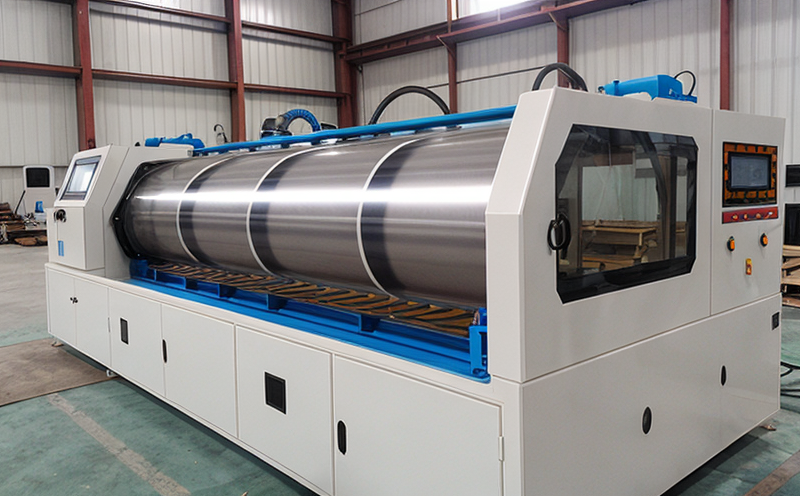ASTM D4157 Abrasion resistance of upholstery laminates Oscillatory cylinder method
The ASTM D4157 standard test procedure is an essential tool for quality managers, compliance officers, R&D engineers, and procurement professionals in the textile sector. This method specifically evaluates the abrasion resistance of upholstery laminates using the oscillatory cylinder apparatus. Understanding this test's significance requires a detailed look into its application, purpose, and implications.
The ASTM D4157 standard is widely used to assess how well an upholstery laminate withstands wear caused by frictional forces during use. The oscillatory cylinder method subjects a specimen of the upholstery laminate to a series of controlled abrasion cycles using a rotating cylinder with abrasive particles. This test simulates real-world conditions, providing valuable insights into the durability and longevity of materials used in furniture and seating applications.
The primary purpose of this test is to ensure that the upholstery laminates meet specific performance requirements set by industry standards. It helps manufacturers identify potential weaknesses in their products before they reach the market, thus enhancing quality control processes. By adhering to ASTM D4157, companies can demonstrate compliance with regulatory requirements and improve customer satisfaction.
The test setup involves placing a specimen of upholstery laminate onto an adjustable support plate within the oscillatory cylinder apparatus. The cylinder rotates at a specified speed while applying pressure to the sample. During each cycle, abrasive particles strike the surface of the material, simulating typical wear patterns observed in actual use conditions. After completing the prescribed number of cycles, the remaining thickness or weight loss is measured and compared against predefined acceptance criteria.
Proper specimen preparation is crucial for obtaining accurate results from this test. Specimens should be cut to standard dimensions and prepared according to ASTM D4157 specifications. Factors such as surface finish, grain direction, and thickness can influence the outcome of the abrasion resistance evaluation. Ensuring consistent preparation across multiple samples allows for reliable comparisons between different materials or batches.
Instrumentation plays a key role in executing ASTM D4157 tests accurately. High-quality equipment ensures precise control over variables like rotation speed, applied pressure, and duration of each cycle. This level of accuracy is essential for generating meaningful data that reflects true performance characteristics of the upholstery laminates being tested.
Reporting results based on ASTM D4157 provides valuable information regarding the abrasion resistance properties of upholstery laminates. Analysts can use these findings to make informed decisions about material selection, design modifications, or process improvements aimed at enhancing product durability and customer satisfaction. Compliance with this standard also supports broader industry efforts towards improving environmental sustainability practices by fostering innovation in sustainable textile manufacturing processes.
Understanding the importance of ASTM D4157 goes beyond just technical specifications; it encompasses the broader impact on quality assurance systems within organizations operating within the textile sector, particularly those focused on producing high-performance upholstery products. By incorporating rigorous testing procedures like ASTM D4157 into their workflows, businesses can build trust with customers while ensuring consistent product performance over time.
In summary, mastery of ASTM D4157 is essential for professionals involved in assessing the abrasion resistance properties of upholstery laminates through oscillatory cylinder methods. This knowledge enables informed decision-making regarding material choices and process optimization aimed at meeting both current standards and future challenges in the textile industry.
Why It Matters
The importance of understanding ASTM D4157 cannot be overstated, especially for those involved in quality assurance processes within the textile sector. This test not only ensures that products meet specified performance criteria but also contributes significantly to overall industry standards and consumer confidence.
- Enhances Quality Control: By rigorously evaluating abrasion resistance using ASTM D4157, manufacturers can identify potential issues early in the production cycle, leading to improved quality control measures.
- Demonstrates Compliance: Adhering to this standard helps companies comply with regulatory requirements and industry best practices, ensuring they meet all necessary criteria for product safety and performance.
- Fosters Innovation: The insights gained from ASTM D4157 testing can drive innovation in textile manufacturing processes by encouraging the development of more durable materials capable of meeting future demands.
In addition to these benefits, compliance with ASTM D4157 also supports broader goals related to environmental sustainability. By promoting the use of high-performance upholstery laminates that withstand wear better, industries can reduce waste and extend product lifecycles, ultimately contributing positively to resource efficiency and reduced carbon footprints.
Applied Standards
The application of ASTM D4157 is rooted in its relevance across various sectors where high-performance upholstery laminates play a crucial role. These include automotive interiors, furniture manufacturing, seating solutions for commercial spaces, and more recently, sustainable design initiatives.
In the automotive industry, durable upholstery materials are vital to ensure passenger comfort and safety over extended periods of use. The oscillatory cylinder method helps manufacturers select appropriate fabrics that can withstand frequent cleaning and handling without compromising on appearance or functionality. Compliance with ASTM D4157 ensures consistent quality across all vehicles produced by a manufacturer.
For furniture makers, particularly those specializing in commercial seating products like office chairs or conference tables, abrasion resistance is critical for maintaining aesthetic appeal and usability throughout the product lifecycle. By adhering to this standard, manufacturers can guarantee their customers receive robust, long-lasting seating solutions that meet high standards of durability.
In recent years, there has been increased emphasis on sustainability within the textile industry. ASTM D4157 contributes significantly to these efforts by encouraging the use of eco-friendly materials while still maintaining exceptional performance characteristics. This balance between environmental responsibility and product quality is crucial as consumers become more environmentally conscious and demand greener alternatives without sacrificing quality.
The application of ASTM D4157 extends beyond traditional applications into emerging areas such as sustainable design practices. As industries seek ways to reduce their ecological footprint, the ability to test and validate materials based on their abrasion resistance becomes even more important. By ensuring that products can withstand wear over extended periods without compromising performance or appearance, companies can contribute positively to environmental sustainability goals.





